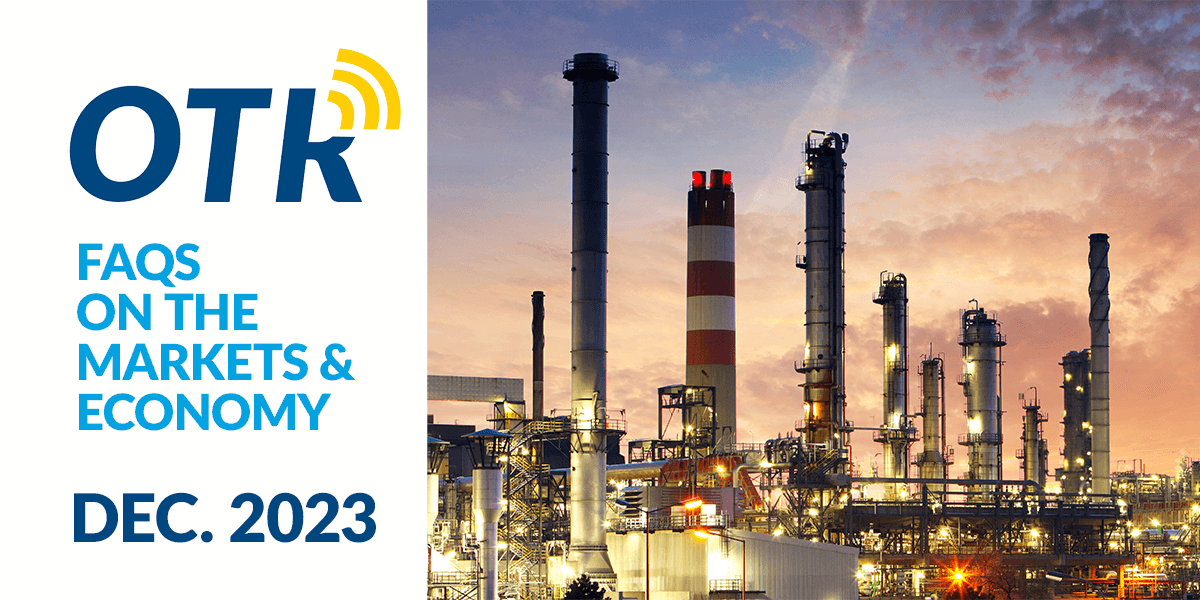-
Economic Perspectives
The Focus is on Inflation
June 2023
- Format
- application/pdf
TRANSCRIPT
This month, we're focusing on inflation. Inflation has been a persistent problem for the Fed, but we're seeing some success right now. Inflation in terms of the consumer price index currently stands at 4%. The good news is, that is half the level of what it was a year ago. The bad news is, that is twice as high as what the Fed wants, which is a target level of around 2%. With some of the actions by the Fed and some luck from other parts, the economy has helped bring down the rate. This a good thing, but the Fed will have to keep interest rates higher for longer to make sure that inflation consistently gets below that 2% level and stays in that area. In this video we're going to take a look at some of the details in terms of what has been causing inflation, where the Fed has seen some successes, and where the Fed still needs to act.
[ Chart 1: 1:05 ] Some of the problems have been solved and others have not. The high level of inflation could be traced back to four categories: Supply chain problems, energy and commodity prices, labor costs, and inflation expectations. The first chart shows the improvements we've seen in the supply chain issues that happened during the pandemic. This problem, by and large, has been resolved. The news is no longer filled with articles about the backlog of container ships at the ports of Los Angeles and Long Beach. The improvement can be seen in the chart, which measures the global supply chain stresses, which have plummeted to record lows in the last few months. This indicates that the bottlenecks have been primarily resolved.
[ Chart 2: 1:53 ] This improvement can also be corroborated by the next chart, which notes the pricing for container ships, which is back to the pre- pandemic levels.
[ Chart 3: 2:05 ] The third chart focuses on commodity prices. If you look over to the very far right, you can see prices peaked in 2022. That was 73% above the pre-pandemic level. They have since partially retreated, but they're still up around 53%. The same sort of story is true with oil. We saw it rally quite a bit, and it has come off, but it is still at levels above the pre- pandemic, but not as much.
[ Chart 4: 2:37 ] In regards to labor costs, the fourth chart shows average hourly earnings doing a good job in terms of showing that demand for labor is much greater than the supply, and is pushing up the cost of labor. Although it is declining, average hourly earnings remain above the level they were before the pandemic started and will probably continue to stay relatively high well into next year.
[ Chart 5: 3:00 ] This final chart shows inflation expectations. This is a very important measurement for the Fed: It measures how inflation in the future affects people's current behavior. Simply put, if a consumer expects prices to increase significantly, they're more apt to consume now, placing greater pressure on goods and services, which will cause prices to rise even faster. So, higher inflation expectations can lead to actual higher inflation.
Currently, short-term and long-term expectations are well above the pre-pandemic level and the Fed's inflation target of 2%. With all this information, for inflation to fade, we believe that the Fed will have to keep interest rates higher for longer. We do not anticipate that the Fed will be lowering interest rates this year. That will not happen until next calendar year, in 2024.
Stay Informed.
Get our Insights delivered straight to your inbox.
Put our insights to work for you.
If you have a client with more than $1 million in investable assets and want to find out about the benefits of our intelligently personalized portfolio management, speak with an investment consultant near you today.
If you’re a high-net-worth client who's interested in adding an experienced investment manager to your financial team, learn more about working with us here.



